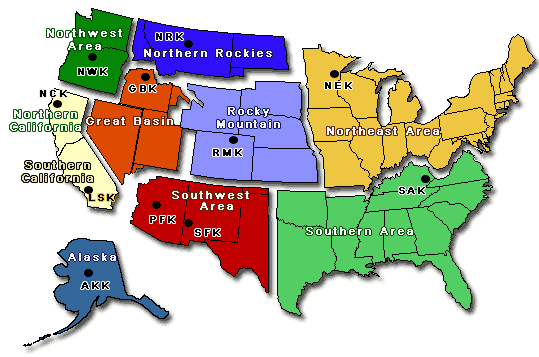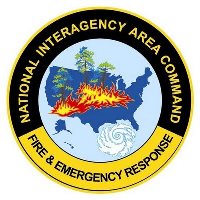(UPDATED at 9:00 a.m. MDT March 18, 2020)
Three Area Command Teams (ACT) have been activated in the United States to assist in the response to the COVID-19 pandemic. The National Multi-Agency Coordinating Group (NMAC) finalized the decision to activate all three of the ACTs today, March 17. Wildfire Today was given this information by individuals closely associated with emergency incident management within the federal government but we are not at liberty to disclose their names at this time.
The mobilization of the ACTs was not typical. In fact, there was little, if any actual mobility. The team members will all work remotely, teleworking from their home units. Since traveling during the pandemic can be dangerous, especially by air, ensuring the health and safety of the team members was job number one. They will conduct business by sharing documents and talking on conference calls. Presumably they will take advantage of applications like ZOOM that use web cameras to enable multiple participants to appear on a screen at the same time during meetings.
Any time an Incident Management Team or ACT is activated they work for someone, usually a Park Superintendent, Forest Supervisor, or similar position. They are given a Delegation of Authority that defines their duties and authorizes them to make decisions and take action in locations where the individuals would not normally have any authority or responsibility.
In this case the ACT’s delegation directs them to coordinate with Federal, State, local, and Tribal officials to identify issues related to COVID-19 and wildland fire response. They will develop fire response plans for maintaining dispatching, initial attack, and extended attack capability. The ACTs will also develop procedures or protocols for mitigating exposure to COVID-19 during an incident, and for responding in areas with known exposure to COVID-19.
The teams will work directly with each Geographic Area’s Coordinating Group Chair, dispatch and coordination centers, and local units to establish appropriate plans. The documents will be based on templates, striving for standardization while ensuring they address the concerns of the Geographic Area.
The Delegation states, “Area Command will work as a support function and not a control function, to develop Wildland Fire Response Plans as identified in the tasking.”
The teams will work under the direction and supervision of the NMAC through an Area Command Coordinator, Joe Reinarz, who is the Incident Commander of the Boise National Incident Management Organization (NIMO) team.
Several years ago the four ACTs were reduced to three, since they had not been used on a regular basis. The teams have been activated during four of the last ten years.
The work of the three teams will be divided by Geographic Areas. The Area Commanders of each team are listed below, with their assigned area:
- Team 1, Tim Sexton: Southern, Great Basin, & Northern Rockies.
- Team 2, Joe Stutler: Rocky Mountains, Northwest, & Alaska.
- Team 3, Scott Jalbert: Southwest, and both Northern and Southern California.
Sexton’s team will coordinate with the Eastern Area Coordinating Group Chair to activate an Eastern Area Type 2 Incident Management Team to implement the taskings given to the ACTs.

The National Multi-Agency Coordinating Group that made the decision to activate the three teams provides a management mechanism for national level strategic coordination to ensure that firefighting resources are efficiently and appropriately managed.
Typically an ACT is used to oversee the management of large incidents or those to which multiple Incident Management Teams have been assigned. They can take some of the workload off the local administrative unit when they have multiple incidents going at the same time. Your typical Forest or Park is not usually staffed to supervise two or more Incident Management Teams fighting fire in their area. An ACT can provide decision support to Multi-Agency Coordination Groups for allocating scarce resources and help mitigate the span of control for the local Agency Administrator. They also ensure that incidents are properly managed, coordinate team transitions, and evaluate Incident Management Teams.
National ACTs are typically comprised of the following:
- Area Commander (ACDR);
- Assistant Area Commander, Planning (AAPC);
- Assistant Area Commander, Logistics (AALC);
- Area Command Aviation Coordinator (ACAC); and
- Two trainees.
They usually have an additional 2 to 15 specialists, including Fire Information, Situation Unit Leader, Resource Unit Leader, and sometimes others such as Safety, Long Term Planning, or assistants in Planning, Logistics, or Aviation.
Since the ACTs have been so rarely used in recent years, some of the existing team members are in danger of losing their currency and there have been very few opportunities to assign trainees so they can become qualified. Last year an Area Command course in California, S-620, graduated several dozen, creating a fresh list of trainees who need assignments. Most likely these three teams will have an unusually high number of trainees working with them.



Is there some way to follow the work that these teams are doing?
Wonder where the NIMOs are at in all this?
I was thinking the same thing??